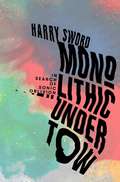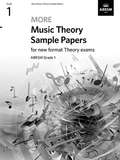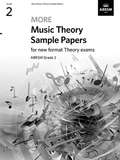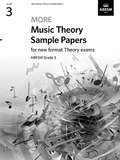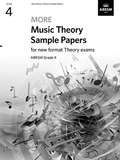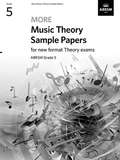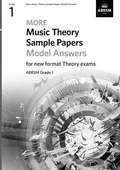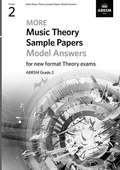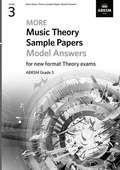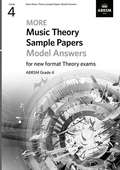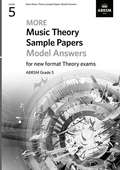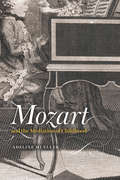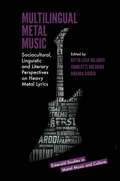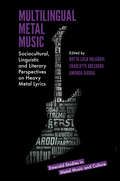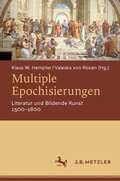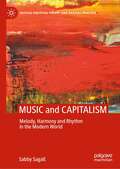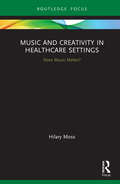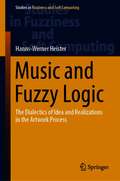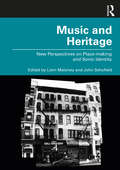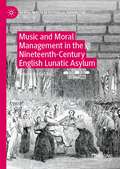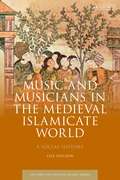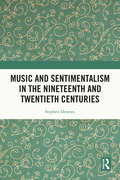- Table View
- List View
Monolithic Undertow: In Search of Sonic Oblivion
by Harry Sword'An inspired and intuitive navigation of the drone continuum . . . with a compass firmly set to new and enlightening psychedelic truths' BECKMonolithic Undertow alights a crooked path across musical, religious and subcultural frontiers. It traces the line from ancient traditions to the modern underground, navigating archaeoacoustics, ringing feedback, chest plate sub-bass, avant-garde eccentricity, sound weaponry and fervent spiritualism. From Neolithic beginnings to bawdy medieval troubadours, Sufi mystics to Indian raga masters, cone shattering dubwise bass, Hawkwind's Ladbroke Grove to the outer reaches of Faust and Ash Ra Temple; the hash-fueled fug of The Theatre of Eternal Music to the cough syrup reverse hardcore of Melvins, seedy VHS hinterland of Electric Wizard, ritual amp worship of Earth and Sunn O))) and the many touch points in between, Monolithic Undertow explores the power of the drone - an audio carrier vessel capable of evoking womb like warmth or cavernous dread alike. In 1977 Sniffin' Glue verbalised the musical zeitgeist with their infamous 'this is a chord; this is another; now form a band' illustration. The drone requires neither chord nor band, representing - via its infinite pliability and accessibility - the ultimate folk music: a potent audio tool of personal liberation. Immersion in hypnotic and repetitive sounds allows us to step outside of ourselves, be it chant, a 120dB beasting from Sunn O))), standing front of the system as Jah Shaka drops a fresh dub or going full headphone immersion with Hawkwind. These experiences are akin to an audio portal - a sound Tardis to silence the hum and fizz of the unceasing inner voice. The drone exists outside of us, but also - paradoxically - within us all; an aural expression of a universal hum we can only hope to fleetingly channel...
More Music Theory Sample Papers, ABRSM Grade 1 (PDF)
by AbrsmABRSM’s official More Music Theory Sample Papers are additional resources for candidates preparing for our new online Music Theory exams. Providing more authentic practice material and a reliable guide as to what to expect in the exam. Model Answers are also available.
More Music Theory Sample Papers, ABRSM Grade 2 (PDF)
by AbrsmABRSM’s official More Music Theory Sample Papers are additional resources for candidates preparing for our new online Music Theory exams. Providing more authentic practice material and a reliable guide as to what to expect in the exam. Model Answers are also available.
More Music Theory Sample Papers, ABRSM Grade 3 (PDF)
by AbrsmABRSM’s official More Music Theory Sample Papers are additional resources for candidates preparing for our new online Music Theory exams. Providing more authentic practice material and a reliable guide as to what to expect in the exam. Model Answers are also available.
More Music Theory Sample Papers, ABRSM Grade 4 (PDF)
by AbrsmABRSM’s official More Music Theory Sample Papers are additional resources for candidates preparing for our new online Music Theory exams. Providing more authentic practice material and a reliable guide as to what to expect in the exam. Model Answers are also available.
More Music Theory Sample Papers, ABRSM Grade 5 (PDF)
by AbrsmABRSM’s official More Music Theory Sample Papers are additional resources for candidates preparing for our new online Music Theory exams. Providing more authentic practice material and a reliable guide as to what to expect in the exam. Model Answers are also available.
More Music Theory Sample Papers Model Answers, ABRSM Grade 1 (PDF)
by AbrsmModel answers for More Sample Papers for ABRSM’s Theory exams Grade 1. Updated for the new format ABRSM Theory exams.
More Music Theory Sample Papers Model Answers, ABRSM Grade 2 (PDF)
by AbrsmModel answers for More Sample Papers for ABRSM’s Theory exams Grade 2. Updated for the new format ABRSM Theory exams.
More Music Theory Sample Papers Model Answers, ABRSM Grade 3 (PDF)
by AbrsmModel answers for More Sample Papers for ABRSM’s Theory exams Grade 3. Updated for the new format ABRSM Theory exams.
More Music Theory Sample Papers Model Answers, ABRSM Grade 4
by AbrsmModel answers for More Sample Papers for ABRSM’s Theory exams Grade 4. Updated for the new format ABRSM Theory exams.
More Music Theory Sample Papers Model Answers, ABRSM Grade 5 (PDF)
by AbrsmModel answers for More Sample Papers for ABRSM’s Theory exams Grade 5. Updated for the new format ABRSM Theory exams.
Mozart and the Mediation of Childhood (New Material Histories of Music)
by Adeline MuellerThe story of Wolfgang Amadeus Mozart’s precocity is so familiar as to be taken for granted. In scholarship and popular culture, Mozart the Wunderkind is often seen as belonging to a category of childhood all by himself. But treating the young composer as an anomaly risks minimizing his impact. In this book, Adeline Mueller examines how Mozart shaped the social and cultural reevaluation of childhood during the Austrian Enlightenment. Whether in a juvenile sonata printed with his age on the title page, a concerto for a father and daughter, a lullaby, a musical dice game, or a mass for the consecration of an orphanage church, Mozart’s music and persona transformed attitudes toward children’s agency, intellectual capacity, relationships with family and friends, political and economic value, work, school, and leisure time. Thousands of children across the Habsburg Monarchy were affected by the Salzburg prodigy and the idea he embodied: that childhood itself could be packaged, consumed, deployed, “performed”—in short, mediated—through music. This book builds upon a new understanding of the history of childhood as dynamic and reciprocal, rather than a mere projection or fantasy—as something mediated not just through texts, images, and objects but also through actions. Drawing on a range of evidence, from children’s periodicals to Habsburg court edicts and spurious Mozart prints, Mueller shows that while we need the history of childhood to help us understand Mozart, we also need Mozart to help us understand the history of childhood.
Mozart and the Mediation of Childhood (New Material Histories of Music)
by Adeline MuellerThe story of Wolfgang Amadeus Mozart’s precocity is so familiar as to be taken for granted. In scholarship and popular culture, Mozart the Wunderkind is often seen as belonging to a category of childhood all by himself. But treating the young composer as an anomaly risks minimizing his impact. In this book, Adeline Mueller examines how Mozart shaped the social and cultural reevaluation of childhood during the Austrian Enlightenment. Whether in a juvenile sonata printed with his age on the title page, a concerto for a father and daughter, a lullaby, a musical dice game, or a mass for the consecration of an orphanage church, Mozart’s music and persona transformed attitudes toward children’s agency, intellectual capacity, relationships with family and friends, political and economic value, work, school, and leisure time. Thousands of children across the Habsburg Monarchy were affected by the Salzburg prodigy and the idea he embodied: that childhood itself could be packaged, consumed, deployed, “performed”—in short, mediated—through music. This book builds upon a new understanding of the history of childhood as dynamic and reciprocal, rather than a mere projection or fantasy—as something mediated not just through texts, images, and objects but also through actions. Drawing on a range of evidence, from children’s periodicals to Habsburg court edicts and spurious Mozart prints, Mueller shows that while we need the history of childhood to help us understand Mozart, we also need Mozart to help us understand the history of childhood.
Multilingual Metal Music: Sociocultural, Linguistic and Literary Perspectives on Heavy Metal Lyrics (Emerald Studies in Metal Music and Culture)
by Riitta-Liisa Valijärvi Amanda DiGioia Charlotte DoesburgThis multi-disciplinary edited collection explores the textual analysis of heavy metal lyrics written in languages other than English, including Yiddish, Latin, Russian, Austrian German, Spanish and Italian. The volume features fascinating chapters on the role of ancient language in heavy metal, the significance of metal in minority-language communities, Slovenian mythology in metal, heavy metal lyrics and politics in the Soviet Union and Taiwan, processing bereavement in Danish black metal, cultural identity in Norwegian-medium metal, and the Kawaii metal scene in Japan, amongst others. Applying a range of methodological approaches - from literary and content analysis to quantitative corpus methods and critical approaches - the book conceptualises various forms of identity via lyrical text and identifies a number of global themes in heavy metal lyrics, including authenticity, parody and the desire to sound extreme, that reoccur across different countries and languages. The book is essential reading for researchers and students of metal music and culture, as well as those with broader interests in cultural studies, musicology, literary studies and popular culture studies.
Multilingual Metal Music: Sociocultural, Linguistic and Literary Perspectives on Heavy Metal Lyrics (Emerald Studies in Metal Music and Culture)
by Riitta-Liisa Valijärvi, Charlotte Doesburg, Amanda DiGioiaThis multi-disciplinary edited collection explores the textual analysis of heavy metal lyrics written in languages other than English, including Yiddish, Latin, Russian, Austrian German, Spanish and Italian. The volume features fascinating chapters on the role of ancient language in heavy metal, the significance of metal in minority-language communities, Slovenian mythology in metal, heavy metal lyrics and politics in the Soviet Union and Taiwan, processing bereavement in Danish black metal, cultural identity in Norwegian-medium metal, and the Kawaii metal scene in Japan, amongst others. Applying a range of methodological approaches - from literary and content analysis to quantitative corpus methods and critical approaches - the book conceptualises various forms of identity via lyrical text and identifies a number of global themes in heavy metal lyrics, including authenticity, parody and the desire to sound extreme, that reoccur across different countries and languages. The book is essential reading for researchers and students of metal music and culture, as well as those with broader interests in cultural studies, musicology, literary studies and popular culture studies.
Multiple Epochisierungen: Literatur und Bildende Kunst 1500–1800
by Klaus W. Hempfer Valeska Von RosenEntgegen einer pauschalen Kritik an den Epochenbegriffen diskutieren die Beiträge des vorliegenden Bandes historische und systematische Bedingungen der Möglichkeit von Epochisierungen. Unterschiedliche sozio-kulturelle Systeme werfen unterschiedliche Fragen auf. Als Literatur- und Kunstwissenschaftler/innen gehen die Beiträgerinnen und Beiträger von Problemkomplexen ihrer jeweiligen Disziplinen aus, rekurrieren für Lösungsansätze aber auch auf das Theorieangebot anderer historischer Disziplinen wie der Geschichtswissenschaft im Allgemeinen oder der Wissenschaftsgeschichte im Besonderen. - Insgesamt ergibt sich, dass die berechtigte Kritik an der spezifischen Faktur spezifischer Epochisierungen weder aus systematischen noch historischen Gründen den generellen Verzicht auf Epochisierungen nahelegt. Solange kein konsistentes Gegenmodell vorliegt, kann es nur darum gehen, Epochentheorie allgemein und Theorien der jeweiligen Einzelepochen im Zusammenhang zu optimieren.
MUSIC and CAPITALISM: Melody, Harmony and Rhythm in the Modern World (Critical Political Theory and Radical Practice)
by Sabby SagallThis book argues that the need for music, and the ability to produce and enjoy it, is an essential element in human nature. Every society in history has produced some characteristic style of music. Music, like the other arts, tells us truths about the world through its impact on our emotional life. There is a structural correspondence between society and music. The emergence of 'modern art music' and its stylistic changes since the rise of capitalist social relations reflect the development of capitalist society since the decline of European feudalism. The leading composers of the different eras expressed in music the aspirations of the dominant or aspiring social classes. Changes in musical style not only reflect but in turn help to shape changes in society. This book analyses the stylistic changes in music from the emergence of ‘tonality’ in the late seventeenth century until the Second World War.
Music and Creativity in Healthcare Settings: Does Music Matter?
by Hilary MossThrough a series of vivid case studies, Music and Creativity in Healthcare Settings: Does Music Matter? documents the ways in which music brings humanity to sterile healthcare spaces, and its significance for people dealing with major illness. It also considers the notion of the arts as a vessel to explore humanitarian questions surrounding serious illness, namely what it is to be human. Overarching themes include: taking control; security and safety; listening; the normalization of the environment; being an individual; expressing emotion; transcendence and hope and expressing the inexpressible. With an emphasis on service user narratives, chapters are enriched with examples of good practice using music in healthcare. Furthermore, a focus on aesthetic deprivation contributes to debates on the intrinsic and instrumental value of music and the arts in modern society. This concise study will be a valuable source of inspiration for care givers and service users in the health sector; it will also appeal to scholars and researchers in the areas of Music medicine and music Therapy, and the Medical Humanities.
Music and Creativity in Healthcare Settings: Does Music Matter?
by Hilary MossThrough a series of vivid case studies, Music and Creativity in Healthcare Settings: Does Music Matter? documents the ways in which music brings humanity to sterile healthcare spaces, and its significance for people dealing with major illness. It also considers the notion of the arts as a vessel to explore humanitarian questions surrounding serious illness, namely what it is to be human. Overarching themes include: taking control; security and safety; listening; the normalization of the environment; being an individual; expressing emotion; transcendence and hope and expressing the inexpressible. With an emphasis on service user narratives, chapters are enriched with examples of good practice using music in healthcare. Furthermore, a focus on aesthetic deprivation contributes to debates on the intrinsic and instrumental value of music and the arts in modern society. This concise study will be a valuable source of inspiration for care givers and service users in the health sector; it will also appeal to scholars and researchers in the areas of Music medicine and music Therapy, and the Medical Humanities.
Music and Fuzzy Logic: The Dialectics of Idea and Realizations in the Artwork Process (Studies in Fuzziness and Soft Computing #406)
by Hanns-Werner HeisterThis book unfolds the manifold, complex and intertwined relations between Fuzzy Logic and music in a first comprehensive overview on this topic: systematically as an outline, as completely as possible, in the aspects of Fuzzy Logic in this relation, and especially in music as a process with three main phases, five anthropological layers, and thirteen forms of existence of the art work (Classics, Jazz, Pop, Folklore). Being concerned with the ontological, gnoseological, psychological, and (music-) aesthetical status and the relative importance of different phenomena of relationship between music and Fuzzy Logic, the explication follows the four main principles (with five phenotypes) of Fuzzy Logic with respect to music: similarity, sharpening 1 as filtering, sharpening 2 as crystallization, blurring, and variation. The book reports on years of author’s research on topics that have been only little explored so far in the area of Music and Fuzzy Logic. It merges concepts of music analysis with fuzzy logical modes of thinking, in a unique way that is expected to attract both specialists of music and specialists of Fuzzy Logic, and also non-specialists in both fields. The book introduces the concept of dialectic between sharpening and – conscious – “blurring”. In turn, some important aspects of this dialectic are discussed, placing them in an historical dimension, and ending in the postulation of a 'musical turn' in the sciences, with some important reflections concerning a “Philosophy of Fuzzy Logic”. Moreover, a production-oriented thinking is borrowed from fuzzy logic to musicology in this book, opening new perspectives in music, and possibly also in other artistic fields.
Music and Heritage: New Perspectives on Place-making and Sonic Identity
by Liam Maloney John SchofieldMusic and Heritage provides new thinking about the diverse ways people engage with heritage. By exploring the relationships that exist between music, place and identity, the book illustrates how people form attachments to place and how such attachments are represented by sound and music-making. Presenting case studies and perspectives from across a range of genres, the volume argues that combining music with heritage provides an alternative and productive opportunity to think about heritage values and place attachment. Contributions to this edited collection use a diversity of methods, perspectives, cues and genres to reflect critically on issues related to these and other interconnections in ways that encourage new thinking about the character, meaning and purpose of cultural heritage, and the various ways in which people can interact with it through sound – thus re-encountering the supposedly familiar world around them. Taking heritage studies, musicology and place-making research in new directions, Music and Heritage will be of interest to academics and students engaged in the study of heritage, history, music, geography and anthropology. It will also be relevant to those with an interest in how music relates to place-making and place attachment, as well as to practitioners and policymakers working in the planning, design and creative sectors.
Music and Heritage: New Perspectives on Place-making and Sonic Identity
by Liam Maloney John SchofieldMusic and Heritage provides new thinking about the diverse ways people engage with heritage. By exploring the relationships that exist between music, place and identity, the book illustrates how people form attachments to place and how such attachments are represented by sound and music-making. Presenting case studies and perspectives from across a range of genres, the volume argues that combining music with heritage provides an alternative and productive opportunity to think about heritage values and place attachment. Contributions to this edited collection use a diversity of methods, perspectives, cues and genres to reflect critically on issues related to these and other interconnections in ways that encourage new thinking about the character, meaning and purpose of cultural heritage, and the various ways in which people can interact with it through sound – thus re-encountering the supposedly familiar world around them. Taking heritage studies, musicology and place-making research in new directions, Music and Heritage will be of interest to academics and students engaged in the study of heritage, history, music, geography and anthropology. It will also be relevant to those with an interest in how music relates to place-making and place attachment, as well as to practitioners and policymakers working in the planning, design and creative sectors.
Music and Moral Management in the Nineteenth-Century English Lunatic Asylum (Mental Health in Historical Perspective)
by Rosemary GoldingThis book traces the role played by music within asylums, the participation of staff and patients in musical activity, and the links drawn between music, health, and wellbeing. In the first part of the book, the author draws on a wide range of sources to investigate the debates around moral management, entertainment, and music for patients, as well as the wider context of music and mental health. In the second part, a series of case studies bring to life the characters and contexts involved in asylum music, selected from a range of public and private institutions. From asylum bands to chapel choirs, smoking concerts to orchestras, the rich variety of musical activity presents new perspectives on music in everyday life. Aspects such as employment practices, musicians’ networks and the purchase and maintenance of musical instruments illuminate the ‘business’ of music as part of moral management. As a source of entertainment and occupation, a means of solace and self-control, and as a device for social gatherings and contact with the outside world, the place of music in the asylum offers valuable insight into its uses and meanings in nineteenth-century England.
Music and Musicians in the Medieval Islamicate World: A Social History (Early and Medieval Islamic World)
by Lisa NielsonDuring the early medieval Islamicate period (800–1400 CE), discourses concerned with music and musicians were wide-ranging and contentious, and expressed in works on music theory and philosophy as well as literature and poetry. But in spite of attempts by influential scholars and political leaders to limit or control musical expression, music and sound permeated all layers of the social structure. Lisa Nielson here presents a rich social history of music, musicianship and the role of musicians in the early Islamicate era. Focusing primarily on Damascus, Baghdad and Jerusalem, Lisa Nielson draws on a wide variety of textual sources written for and about musicians and their professional/private environments – including chronicles, literary sources, memoirs and musical treatises – as well as the disciplinary approaches of musicology to offer insights into musical performances and the lives of musicians. In the process, the book sheds light onto the dynamics of medieval Islamicate courts, as well as how slavery, gender, status and religion intersected with music in courtly life. It will appeal to scholars of the Islamicate world and historical musicologists.
Music and Sentimentalism in the Nineteenth and Twentieth Centuries
by Stephen DownesIn a wide-ranging study of sentimentalism’s significance for styles, practices and meanings of music in the nineteenth and twentieth centuries, a series of interpretations scrutinizes musical expressions of sympathetic responses to suffering and the longing to belong. The book challenges hierarchies of artistic value and the associated denigration of sentimental feeling in gendered discourses. Fresh insights are thereby developed into sentimentalism’s place in musical constructions of emotion, taste, genre, gender, desire, and authenticity. The contexts encompass diverse musical communities, performing spaces, and listening practices, including the nineteenth-century salon and concert hall, the cinema, the intimate stage persona of the singer-songwriter, and the homely ambiguities of ‘easy’ listening. Interdisciplinary insights inform discussions of musical form, affect, appropriation, nationalisms, psychologies, eco-sentimentalism, humanitarianism, consumerism, and subject positions, with a particular emphasis on masculine sentimentalities. Music is drawn from violin repertory associated with Joseph Joachim, the piano music of Chopin, Schumann, and Liszt, sentimental waltzes from Schubert to Ravel, concert music by Bartók, Szymanowski and Górecki, the Merchant-Ivory adaptation of The Remains of the Day, Antônio Carlos Jobim’s bossa nova, and songs by Duke Ellington, Burt Bacharach, Carole King, Barry Manilow and Jimmy Webb. The book will attract readers interested in both the role of music in the history of emotion and the persistence and diversity of sentimental arts after their flowering in the eighteenth-century age of sensibility.
